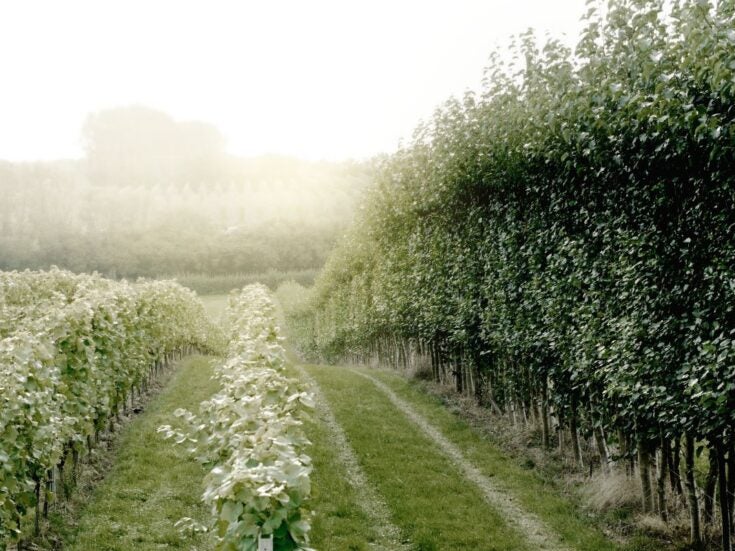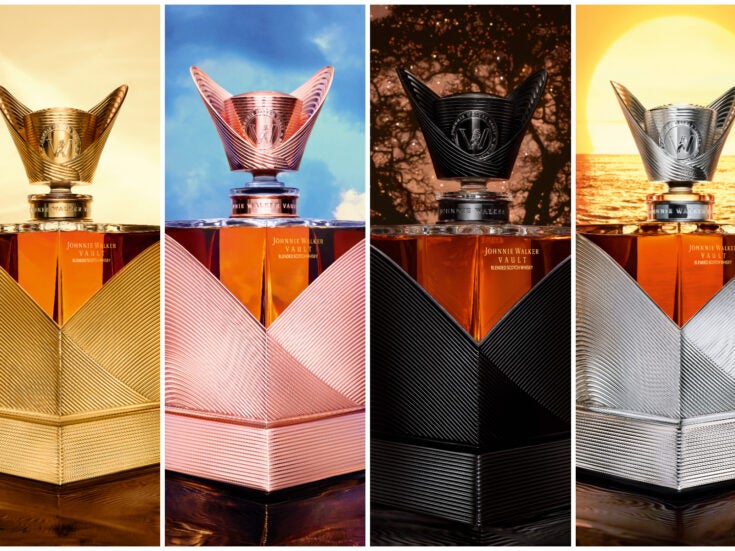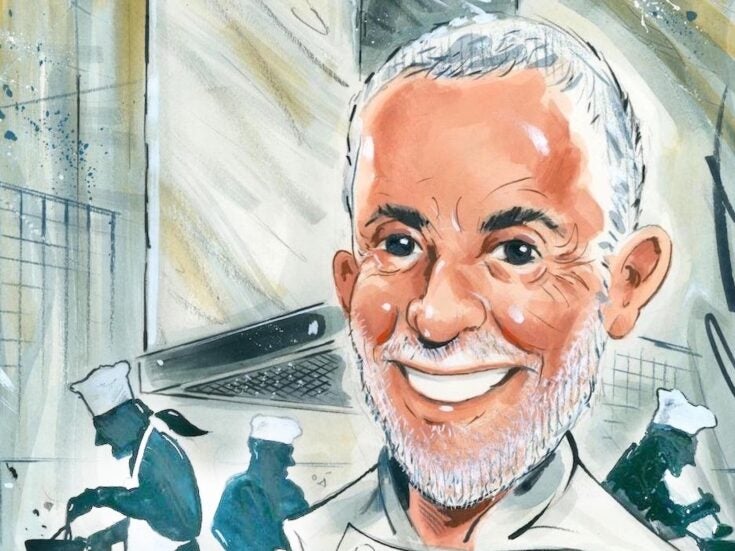
Moments of Claret
In his second Spear’s column on the world’s finest wines, Marlon Abela looks at the comeback of Bordeaux and compares the early-Noughties vintages that helped the region’s renaissance
IN BORDEAUX THE 2000 vintage is perhaps one of the most important of its history. It is a benchmark year and also a turning point for the region. Undoubtedly the wine is great in its own right: the climatic conditions on the whole were conducive to a ripe and balanced harvest and it is surely the best all-round vintage since 1990. Being the first vintage of the millennium also helped propel it to iconic status. Commercially it was also ground-breaking: the first-growths châteaux jumped on the euphoric bandwagon of the new millennium and priced the vintage at what were then record levels.
Stylistically, 2000 was also the dawn of a new era. With increasing global competition, the region of Bordeaux had to react quickly. Viticulture, harvesting and vinification standards were all drastically improved to combat the threat of the upcoming and then very fashionable wave of highly concentrated and technically perfect wines from the New World. Not so long ago I can recall the prices of Harlan, Screaming Eagle, Bryant and Colgin (all stemming from the Californian Cabernet Sauvignon ‘garage wine’ wave) trumping the prices of the first growths at auction — clearly a blow to French orgueil.

Bordeaux was stagnating. Some great wines were being produced, but the problem was inconsistency. The 1990 vintage bore some excellent and still sought-after wines, but the four vintages that followed it represent one of the weakest series of wines the region has seen. Something had to change — but this is not the case a decade on. Incredible progress has been achieved and since 2000 there are no more bad vintages coming out of Bordeaux, with the top châteaux consistently earning critical acclaim and achieving critical prices.
The wines are fruitier, rounder, more forward in style, often containing higher levels of alcohol and less volatile acidity levels. There seems to be an insatiable global appetite for the region, and it has become both a status symbol and an investment commodity, something that would have been unimaginable a couple of decades ago.
To some Bordeaux-lovers, the bone of contention is that the wines have become somewhat homogenised in style and that they lack the heart and soul that the old-style vintages of Bordeaux offered. The great wines of 1959, 1961 and 1982 are still drinking and make a phenomenal glass today, offering levels of aromatic complexity that some believe will never be achieved again with today’s winemaking style.
For a restaurateur such as me, what saddens me most is that we simply won’t be able to afford to feature these wines in our establishments, and perhaps that is one of the significant cracks in what I believe is a truly brilliant commercial and marketing strategy that has been implemented by ‘The Place de Bordeaux’.
Traditionally Bordeaux and fine dining have always gone together, but with wine release prices at the present level Bordeaux is selling itself out of what used to be its core market. It has become big business. In 2009, for example, Lafite produced an estimated 15,000 cases of Grand Vin at a release price of €550 (second release €750, third release €1,000), which equates to a minimum of €99 million worth of stock. When one thinks of how many top châteaux there are in Bordeaux, that’s a lot of wine to shift every year. I wonder what proportion of these wines are purchased as an investment or for actual pleasure.
To better understand this prodigal vintage and perhaps its less recognised siblings, I decided to organise a wine tasting of Lafite Rothschild, Latour and Mouton Rothschild (LLM) of the 2001, 2002 and 2004 vintages, including 2000 as the benchmark. (I omitted 2003 due to the freak over-ripeness of the vintage.) LLM represent the quintessence of great Claret and (some may argue) are the backbone of Bordeaux. To take the time needed to appreciate the wines fully, I invited my panel to a four-course meal at the Greenhouse, pairing every vintage with a dish but not revealing the château (I didn’t know the order of the wines either).
The panel
Bill Knott, acclaimed food and wine expert, writer of the Gannet column for How to Spend It;
David Giampaolo, founder of Pi Capital, man about town and food and wine aficionado;
Jean-Marc Heurliere, wine buyer for MARC Fine Wines and sommelier by profession;
Patrick Willis, restaurant and hotel veteran, my colleague in my restaurant business.
The menu
Seared duck foie gras and prune
(With 2004 vintages)
Roasted wild turbot, leek fondue, smoked potato
(With 2002 vintages)
Potato gnocchi and black truffle, crispy pancetta, glazed chicken oyster
(With 2001 vintages)
Scottish venison, foie gras, black truffle and parsley roots
(With 2000 vintages)
The vintages
The 2004 and 2002 are considered relatively good vintages and produced classic Médoc-style wines, with 2002 perhaps having the edge. 2001 was probably better on the right bank but careful harvesting and selecting only the best grapes did produce some forward and opulent-styled wines in the Médoc. The 2000 vintage started off as very challenging, but a perfect Indian summer produced some of the best grapes seen in Bordeaux. For our tasting we should assume that the châteaux spared no expense to ensure that the wines were made to the highest quality for the vintage.
Tasting notes
2004: An early drinking vintage, already accessible, classic Pauillac in style. Lafite was showing best to everybody on the panel. Elegant, medium-bodied, lovely smooth texture, with a nose of tobacco, liquorice and blackcurrant. The Latour was a close second, but as is typical with the wine, it was more restrained, waiting to come out of its shell — it should mature beautifully. Mouton showed familiar aromas of eucalyptus, spice, bell pepper; it was a little leaner in style than its two peers.

2002: Also a classical Pauillac-style vintage, perhaps with more structure than 2004. Lafite was again the preferred wine, a real ‘blockbuster’ and a pleasant surprise for the vintage. It had an impressive fleshy texture and length. The nose was pure and mineral, complemented by aromas of damson and cedar wood. Latour again was a lovely wine, darker in colour than the above with a thick, sweet, dense texture and a slightly closed nose with notes of iodine, liquorice and dried fig. Again it should develop into a lovely wine. Mouton was slightly vegetal on the nose, with aromas of leather, wood and a whiff of shoe varnish. A bit of volatile acidity, too — I was expecting a fuller palate.
2001: The wines were more open and complex, precocious in style, mature and rich, showing well at present. The classical Médoc-style Lafite was silky and harmonious on the palate, with a nose of cedar wood, dark chocolate, stewed plum and rose petal. The Mouton was rich in texture with a firm but long finish. At another recent tasting it fared very well next to the wonderful 2000, with many even preferring it.
2000: Very ripe, generous wines, showing a dense concentration of fruit. With optimum ripeness, these are elegant medium to full-bodied wines. The Lafite was corked, but when I tasted it some years ago it showed tremendous potential. There was a split of opinion here between Latour and Mouton. The former was young, dense, still a bit tight but with a sensual texture and aromas of blackberry jelly, bitter chocolate and rosemary. A very well-made and harmonious wine. The latter has a compact and chewy palate; surprisingly it’s already drinking quite well, with aromas of coffee, milk chocolate, clove, morello cherry, kirsch — a ripe and very generous wine.
The verdict
The millennial vintage is certainly a class above the others, and I believe Latour, Mouton and undoubtedly Lafite will also evolve to be great wines, but I don’t think, judging from this tasting, they will reach the pinnacle that the 1982s, for example, have achieved in either texture or complexity.
The average bottle price of the wines we tasted was £600. I do ask what has caused these wines to command such prices: consumer or investor demand? The improved reliability of the top châteaux has given Bordeaux its supremacy back. As for LLM, it has been catapulted among the most desirable brands in the world. Only the end purchaser can justify the expense.
Marlon Abela is the founder of MARC Ltd, whose portfolio includes MARC Fine Wines, Morton’s, Umu and the Greenhouse







